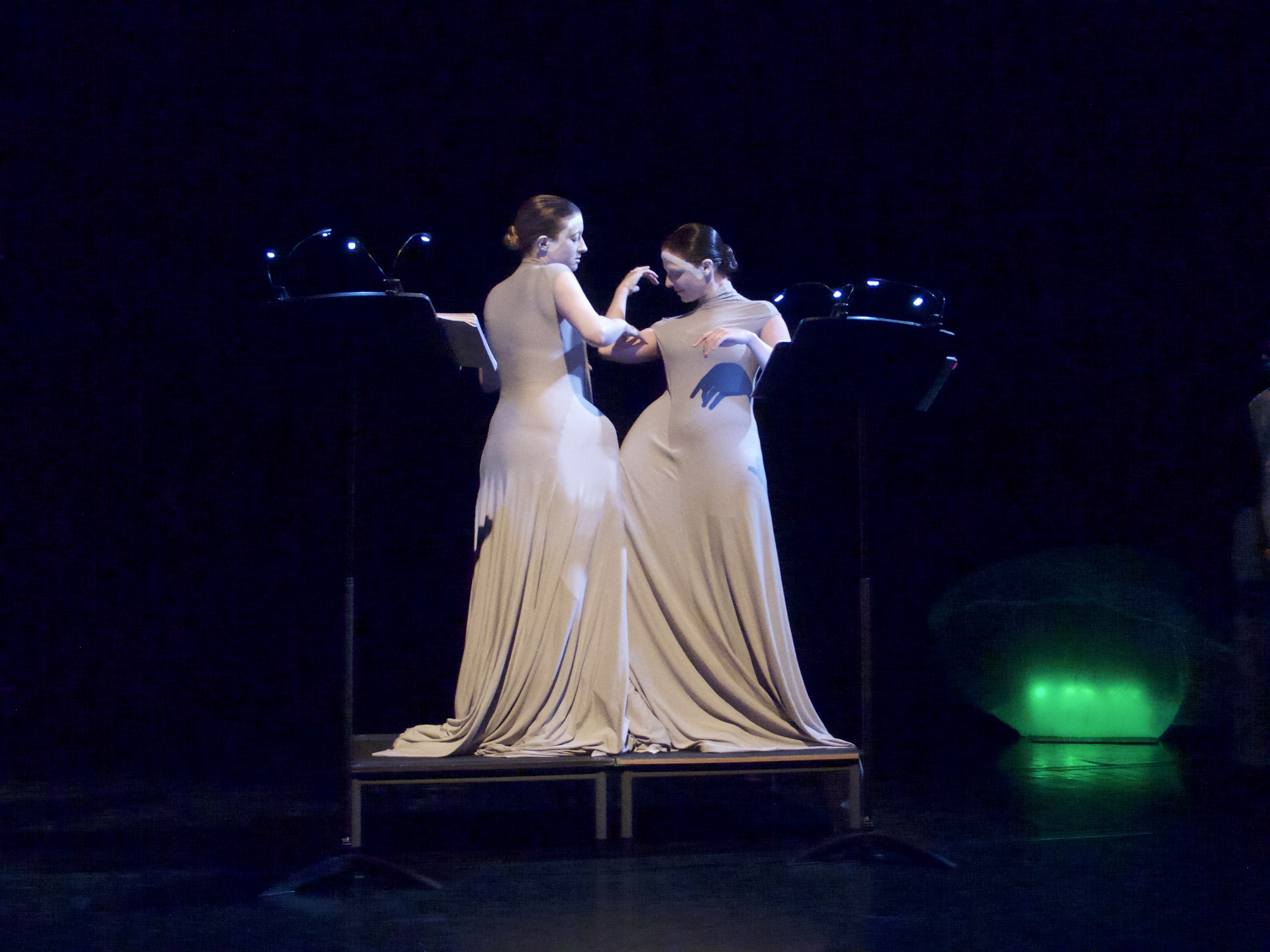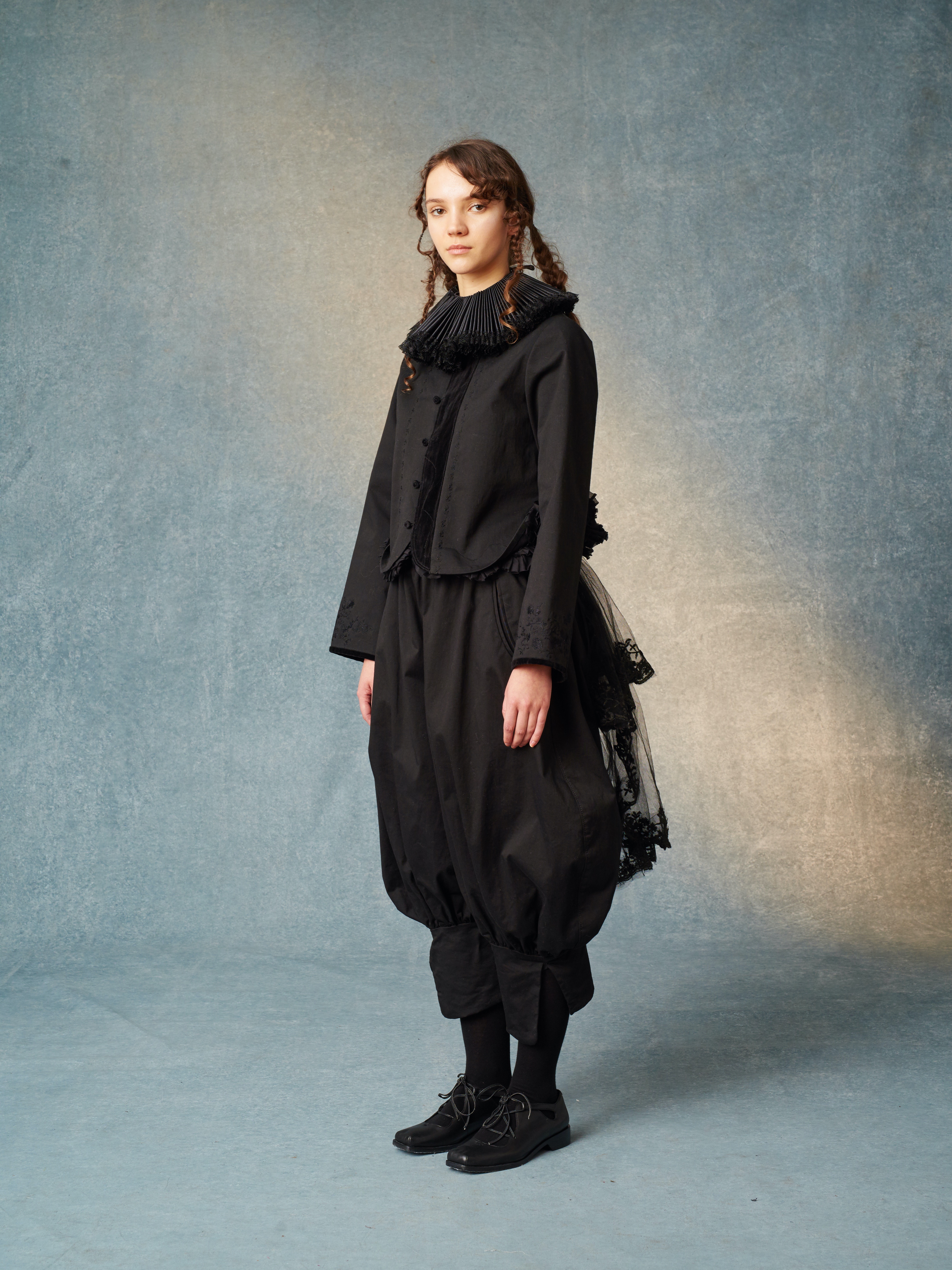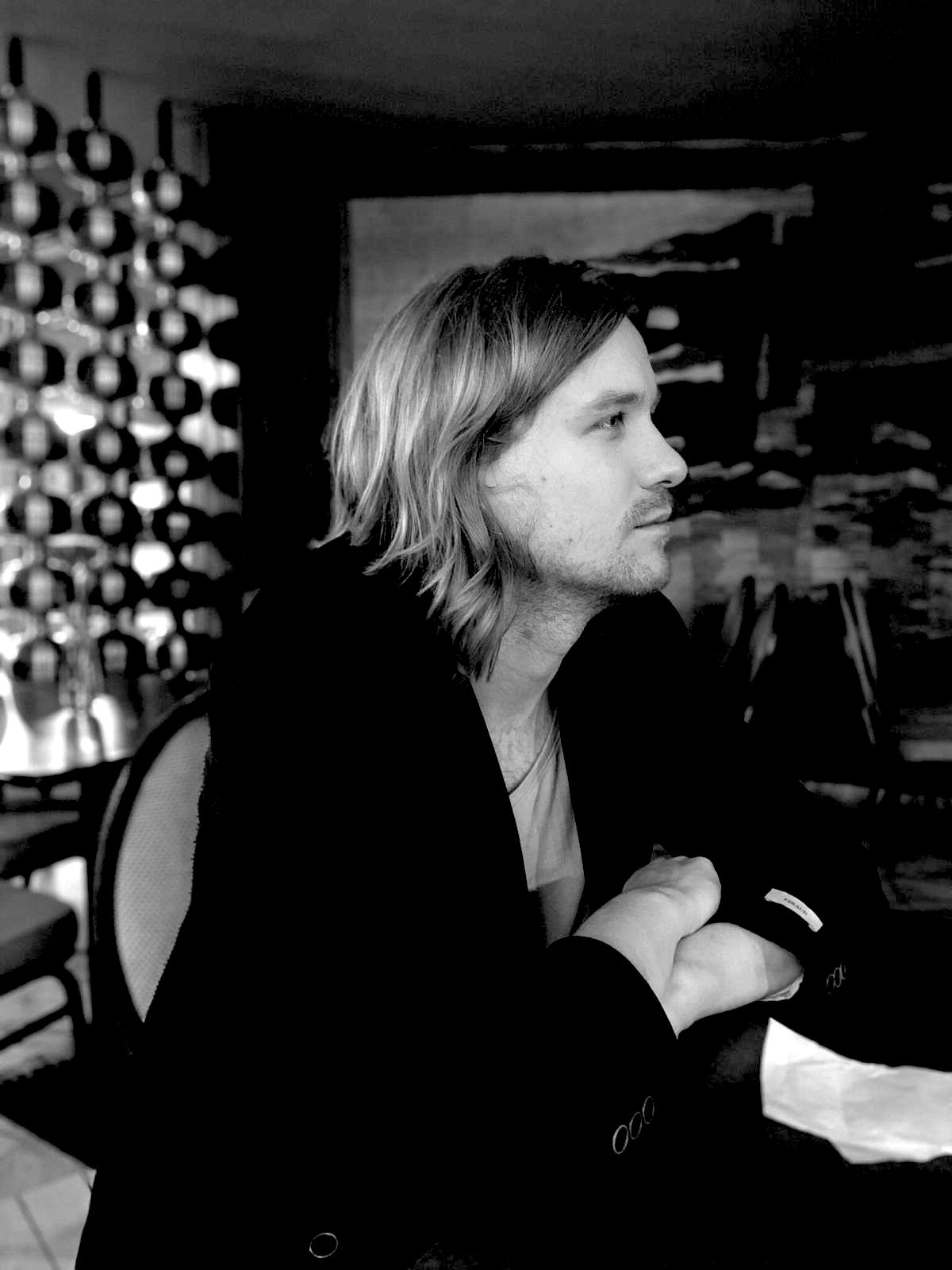Please tell us about yourself and what you do.
My recent work concerns the research project ‘Contingency Dialectics,’ an attempt to develop a contemporary leftist methodology of composition. By adapting the implications of recent cosmological discoveries, the insights of New Materialism, and the social and aesthetic potentials of upcoming technologies, it offers a model of transcendental intersubjectivity (at the aesthetic event) from which non-human agency emerges. Central to this theory is the application of the concept of false consciousness to the evolutionarily determined limits of perception at a biological level, and analysis of the spatialisation of experience under late capitalism.
The primary realisation of this is ‘Fashion-Opera,’ a practice whereby spatial, interventionist art-forms combine with their temporal, autonomous counterparts in a dialogue that reconciles the independence and hierarchical equality of each element with their integration into a logical whole. It is built upon the above-mentioned theory of a particular type of antagonism, a ‘contingent dialectic’: in this, each pole of an opposition maintains its identity and integrity in mutual exclusivity, whilst simultaneously being made to contain one another and to be contained within larger structures that permit the paradoxical integrity of their constituents. Through these concepts and their application across all stages of the aesthetic process, it is hoped that works can be produced which rival and overcome given structures of perception, and allow for new forms of communal intelligence in a posthuman ‘contingent subjectivity.’
Please choose 2-3 works and tell us about them.
Our second fashion-opera, ROBE, is out for pre-order now on Métier Records.
You can preview the aria ‘Beira’s Speech’, performed by Ben Smith and Sarah Parkin, here.
ROBE is an opera about cities, virtual reality and artificial intelligence that combines fashion, contemporary dance, experimental theatre, design, poetry and virtuosic music. Scored for piano, flute and four singers, it tells the story of an A.I., EDINBURGH, that wants to become a living city. Premiering as part of the Tête-a-Tête Opera Festival in 2019, it was shortlisted for a Creative Edinburgh Award for Collaboration and received a funding award from Help Musicians UK to create this CD recording.
The opera was inspired by the experience of living in Edinburgh, a city that seems to contain multiple realities: in its architecture, landscape, history, language. The contrast of different ‘Edinburghs’ that exist in the same space, as though parallel worlds, is the inspiration for work such as Robert Louis Stevenson’s ‘Jekyll and Hyde’, and James Hogg’s ‘Confessions of a Justified Sinner.’ ROBE tries to expand this idea to examine the implications of virtual reality: exploring how, in contemporary society, multiple realities and experiences are layered upon one another to create a strange amalgam of jostling stimuli.; and how artistic collaboration can perhaps create, by combining individuals through the ancient technology of artworks, a form of artificial superintelligence. Thus, the distinct practices of musicians, fashion designers, artists, choreographers and directors draw connections between primeval myth, official history, virtual reality and raw, personal experience: showing how these separate domains are in fact integral to one another, and how they intersect to produce our modern world.

*
My recent cantata The Drowning Shore premiered on the 19th November as part of Compass Presents’ Oracles in Sepia. It was created with mezzo-soprano Clara Kanter, director Hannah Lovell, fashion curator Gemma A. Williams and creative consultant David Mazower.
The Drowning Shore contextualises the post-covid digitalisation of performance within related historical trajectories to explore division as a form of meaning-production in the social and the aesthetic. As part of this, it looks at: the politics of nation-states and language; the performative fictions of identity; the logic of filmic language and juxtaposition; and the illusion of biological individuality within ecosystems of interdependent parts.
The work consists of a 14-minute monodrama that incorporates Sholem Asch’s 1907 play God of Vengeance, and its contrasting themes of written holy Hebrew and everyday Yiddish vernacular, with an original Scots-English text. Scored for ‘a mezzo-soprano in a screen’, the work proceeds from the conceit that recent events have seen God of Vengeance's dichotomy between written and spoken language turned on its head: as the programme note explains, “the internet - a living, breathing text - seems to grow at the same rate as our concerns with other virtual lines - most cruelly, the national borders that claim so many lives. The post-Covid digitalisation of work and performance has both accelerated this process, and, through that rapidity, thrown it into an uncanny new light. Are we horrified, or bored - that we now exist purely as avatars, in pools of watery light, like ghosts, or flowers pressed between glass panes?”
This digitalisation of experience is related to the spatialisation of time and history under postmodernism. Through this, it attempts to engage strategies of juxtaposition without an objectivisation of style and the resultant (often meaningless) pluralism. One way of doing this is problematising the binaries that are inherent in some of the themes of the work at a structural level: turning dichtomies into axes, or even constellations, clouds of meaning. Another is by questioning Pavlovian association of stylistic reference, for example, by challenging whether one is hearing a historically-laden scale that corresponds to a particular tradition, or a near-identical total chromatic pitch set derived from a vocal analysis of a reading of the libretto. Finally, by using negativity, utilising the parts of a musical object that are left out ie the pitches not played in establishing a theme, and then turning them into a consequent that is both random/juxtaposed but also integral.
Fundamental to these strategies is the question: what is the experience of finding meaning in a screen, of living life according to this logic, something that is absolutely central to all of our lives. The logic of screens did not pop out of nowhere: it is the logic of late capitalism and its objectification of time. Post-covid, there is nowhere to hide from this. Even performance has become television, like the fulfilment of some kind of ancient doom. The Drowning Shore comments on the still, reflective beauty of live performance. Though of course, like a flower in the glass pane, or the undead masses summoned by our screens, it is no longer itself.
What are you working on at the moment?
Created with Kelly Poukens, Suzy Vanderheiden, Gemma A. Williams and Renli Su, our third fashion-opera WOAD will premiere next year around Europe. You can book tickets to the France show here.
WOAD is a work scored for soprano, saxophone and performers that re-reads the Scottish folk tale of Tam Lin through recent cosmological discoveries. Tam Lin is a traditional myth of metamorphosis which, through its imagery, can be read as an exploration of the mutable, transformative nature of the body: how, in adolescence, for example, our bodies are recast and divided through time as a series of separate versions of ourselves. In WOAD, these ideas are used to aestheticise the social implications of multiverse theory: where versions of events coexist in different areas and types of space. How does such a description of our universe change the way we regret the past, or dream about our future? It tries to contextualise this against the backdrop of the social change foregrounded by the current health crisis, thus relating the themes of metamorphoses and quantum ‘flickering’ to socio-historical revolution and the possibility of a break with the horrors of late capitalism.

Where can people connect with you?
Website
Twitter
Instagram
Facebook
